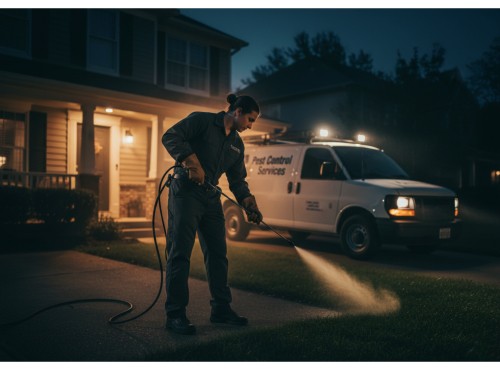Factors Affecting Emergency Pest Control Costs
Pest Type and Infestation Severity
Each pest species requires a unique treatment strategy based on its behavioural ecology and level of infestation. For example, a rodent incursion in a Queen Street West restaurant may demand tamper-resistant bait stations, mechanical traps, and sanitation review, whereas a German cockroach outbreak in a kitchen near Yonge and Dundas often requires multi-stage intervention with microencapsulated formulations (ME) or residual sprays.
| Pest Category |
Typical Range (CAD) |
Common Treatment Elements |
| Rodents (mice, rats) |
$250 – $600 |
Baiting systems, exclusion work, sanitation advice |
| Cockroaches |
$200 – $500 |
Crack and crevice treatment, residual spray |
| Bed Bugs |
$400 – $1,200 |
Inspection, heat or chemical treatment |
| Wildlife (raccoons, squirrels) |
$350 – $900 |
One-way doors, roofline sealing |
| Ants / Spiders |
$200 – $400 |
Surface spray, spot treatment |
| Follow-Up Inspection |
$75 – $150 |
Monitoring devices, pest pressure check |
These averages represent the 2024–2025 GTA market and align with regional surveys from NPMA and the CPMA, both of which emphasize that pricing reflects technician readiness, certified training, and compliance with regulated chemical use.
Response Time and Accessibility
True 24-hour pest control services maintain readiness to deploy within 60 to 90 minutes, regardless of time or location. This rapid mobilization is especially critical in downtown corridors such as Spadina and Queen, Bay and Bloor, and King and Bathurst, where commercial density and public exposure risks are high. Premium fees compensate for after-hours technician pay, vehicle operation, and logistical coordination during non-business hours.
Property Type and Structural Complexity
Building configuration influences cost as much as pest species. A single-family home in East York may require limited surface treatment and exclusion work, while a restaurant in the Distillery District or mixed-use structure near St. Lawrence Market might demand specialized sanitation inspections, audit readiness documentation, and multiple service visits. Older buildings with concealed voids, utility penetrations, and open weep holes often require extended service times.
Treatment Method and Material Selection
The chosen treatment method determines both material cost and labor duration.
- Chemical spot treatments using residual sprays or dust formulations are cost-effective for localized insect activity.
- Heat treatments, often used for bed bugs, provide total eradication without chemical residue but require higher energy and equipment costs.
- Biorational pesticides and botanical insecticides are increasingly selected for sensitive sites such as childcare centers or pet-friendly buildings. Though priced higher, they support sustainable IPM practices and meet Health Canada PCP environmental standards.
Follow-Up and Monitoring Services
Emergency interventions are often followed by monitoring to confirm control success. Most Toronto-based pest control companies include a 14-day follow-up inspection, during which technicians deploy glue boards, pheromone traps, or digital monitoring systems. For commercial accounts, extended monitoring programs may be offered under quarterly pest control contracts to prevent re-infestation.
Value-Based Transparency and Professional Reporting
Reputable pest management companies in Toronto emphasize transparent pricing, detailed documentation, and open communication with clients. Each service report includes:
- Inspection findings and identification of active pests
- Treatment records referencing product names and Health Canada PCP registration numbers
- Safety Data Sheets (SDS) for all materials used
- Recommendations for preventive maintenance and sanitation corrections
This standardized reporting system builds client confidence and meets the audit expectations of Toronto Public Health inspectors.
Companies servicing high-traffic commercial zones, such as Eaton Centre, Harbourfront, and Bloor-Yorkville, increasingly offer tiered pricing models. These allow clients to select between single-emergency response or subscription-style programs providing ongoing protection. Tiered programs are particularly valuable for restaurants and hotels, where consistent monitoring can prevent reputation loss from public exposure or inspection failures.
Balancing Cost and Risk
Emergency pest control costs are best evaluated relative to potential risk and damage. Delays in treatment can escalate repair and remediation expenses substantially.
- A rodent colony left unchecked for 48 hours can cause extensive contamination of food inventory, electrical damage, and insulation destruction, resulting in repair costs exceeding $5,000.
- Bed bug infestations in hospitality venues near Rogers Centre or CN Tower can lead to reputational harm and regulatory penalties under Toronto Public Health codes.
- Visible pest presence in tourist-heavy locations may trigger social media exposure and lost revenue, making immediate professional intervention a critical investment.









